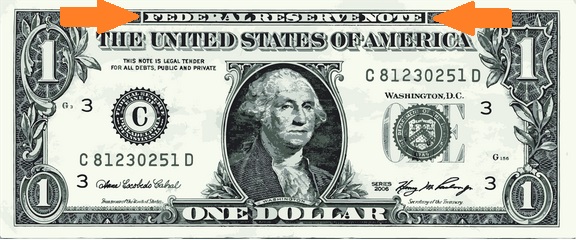Abridged since insults don't discuss details of the topic.
Here’s what I’m telling you: I know a lot about banking and central banking.
Are you going to claim banks don't use fractional reserves?
Dale, yes. They do not use “fractional reserves” in the way you think.
Your perception is widely held, and is based on a misunderstanding of many banking terms, and simply, on reading people like Griffin, rather than things like the Federal Reaerve Act.
If you ask, I will tell you, and tell you how to check what I tell you - not by suggesting you read conspiratorial books, but by showing you the laws which govern bankings, the actual policy papers and statements of central banks, and so on.
➽ Here’s what I’m telling you: I know a lot about banking and central banking.
Evidence?
➽ but by showing you the laws which govern bankings, the actual policy papers and statements of central banks, and so on.
If so, you will increase your Cred with me.
Dale, everything I tell you is checkable from authoritative sources.
For example: the claim is that banks use “fractional reserves” - that is, that they can create loans as some multiple of their reserve balances. So, if the Fed gives them more reserves, they can make more loans.
Thats false.
The Federal Reserve Act allows banks to make loans as a multiple of their CAPITAL.
Reserve balances are not “capital”, to banks.
Traditionally, “capital” is a balance sheet “right side” entry which essentially consists of assets minus liabilities, at the most basic level.
For banks, this isn’t true.
“Bank capital” has a specific meaning, which is “those liabilities which we, the Fed, allow you to count as capital”.
The definition of bank capital is generally specified by the Basel Accords, to which the US is not signatory, but which generally comply with.
Each central bank is tasked with enacting the requirements of the current Basel Accord (they are updated from time to time).
The Fed has done that.
Traditionally, capital was divided into three Tiers - starting with “paid in capital” as Tier 1 - that is, the amount of money that bank stockholders actually paid for their stock in the bank), and Tiers 2 and 3, which consisted of different levels of “risk weighted” capital - that is, bank capital holdings (securities) which have no face values, but must be valuated using GAAP standards (such as mark to market).
Since the Great Recession, the Basel III agreement restricted the definition of bank capital to Tier 1 capital, to encourage a more conservative constraint on bank lending practices.
In no case are central bank reserve balances EVER counted as “bank capital”.
In fact, the role of “reserves” is widely misunderstood (we can go through an intuitive explanation of what reserves are for, which make them quite understandable, if you want).
Banks are allowed to lend amounts of money up to a point where bank capital is a certain percentage of that amount - I’m not sure what that is now, but it has been 12% for years.
So, if a bank has $120 million in “bank capital”, as defined by the Fed’s implementation of Basel, it is allowed to make a total of $1 billion in loans.
That has nothing to do with reserves, and nothing to do with deposits (banks don’t lend deposits - and the amount of deposits held by a bank has nothing to do with the amount of money they can lend).
Banks are not “reserve constrained”, they are “capital constrained.”
I just wrote all of that, on the fly.
If you want to fact check it, we can do that.
But when I say I understand banking, I mean I understand it well enough to write something like that on the fly, and have it be accurate.

